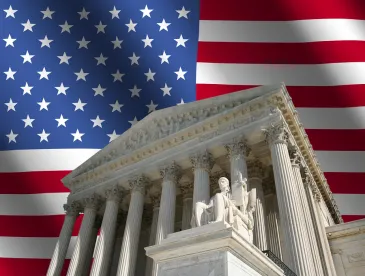On Monday, the Supreme Court heard oral argument in the consolidated “church plan” cases, Advocate Health Care Network v. Stapleton, St. Peter’s Healthcare System v. Kaplan, and Dignity Health v. Rollins. As an initial matter, unless the Senate confirms Neil Gorsuch in the very near future, the case will be decided by an eight-Justice court. While it’s impossible to say for sure how Justices will vote, there may be cause for optimism for the Defendants (against whom the lower courts ruled in all three cases).
At first, Justices Sotomayor and Kagan both seemed hostile to the Defendants’ view of the construction of the church-plan exemption. But this view seemed to change during the Plaintiffs’ presentation. Justice Sotomayor commented to Plaintiffs’ counsel “I’m torn,” and – saying that ERISA’s church-plan provision “could be read either way” – asked counsel how to “break the tie.” Both Sotomayor and Kagan also appeared to struggle with the idea that Plaintiffs’ reading would likely exclude some of the organizations that the 1980 amendments to the church plan exemption were intended to encompass.
Justices Alito and Kennedy seemed to focus on church-plan sponsors’ long-standing reliance on the IRS/PBGC interpretations of the exemption. Defendants’ counsel noted that their liability for penalties alone could exceed $66 billion. Justice Alito seized on Plaintiffs’ counsel suggestion that the church-plan cases were “primarily about forward-looking relief” (as opposed to penalties), going so far as to ask counsel to disavow seeking penalties in light of Defendants’ reliance on IRS letters.
Justice Kennedy also seemed concerned that hundreds of plans had sought and obtained the blessing of the IRS and/or PBGC, and could still face liability 30 years later. Chief Justice Roberts appeared to align with this view, asking Plaintiffs’ counsel why those agencies took a view opposite to Plaintiffs’ interpretation.
Not surprisingly, Justice Ginsberg seemed to be squarely in Plaintiffs’ camp, and dismissed other Justices’ concerns by noting that the lower courts could fashion a remedy that takes Defendants’ good faith into account.
Justice Breyer took a pragmatic approach – he asked several hypotheticals, pressing Plaintiffs’ counsel to say whether a plan would be a church plan in each scenario. This line of questioning seemed to highlight for Justice Sotomayor that Plaintiffs’ reading would deny church-plan status to many of the plans that lobbied for the 1980 amendments.
As usual, Justice Thomas was silent throughout.
In short, although any prediction would be speculative, the Justices’ questions suggest that Alito and Kennedy would take the defense view, based on the reliance concerns, likely joined by Roberts. And it’s probably safe to assume Justice Thomas would side with these Justices.
Justices Sotomayor and Kagan could go either way, but if they adopt the Defendants’ view of the statute, it will probably be based on their concerns that the Plaintiffs’ reading ignores the purpose of the 1980 amendments (i.e., exempting plans maintained by church-affiliated groups). If the conservative wing of the Court holds together, then the addition of either Sotomayor or Kagan would yield a victory.
However, if the usual ideological split prevails, a 4-4 tie would leave the adverse rulings intact.





 />i
/>i

